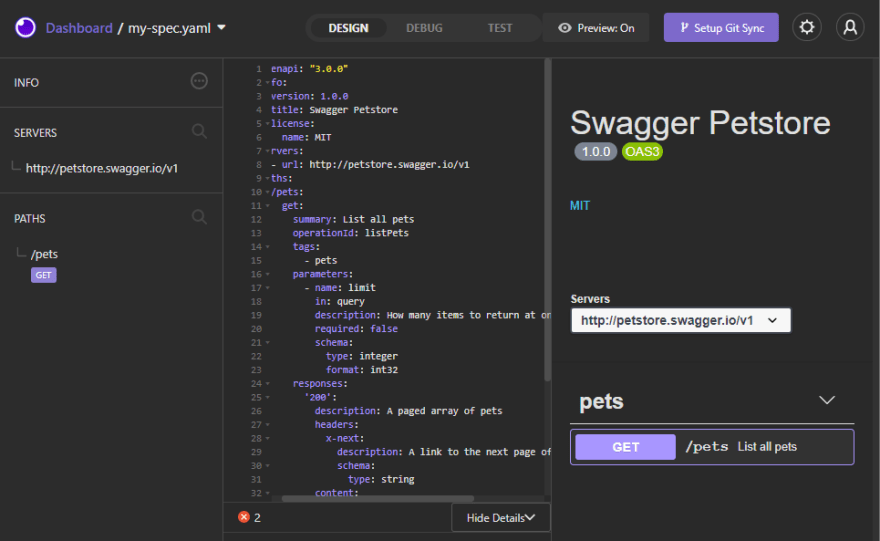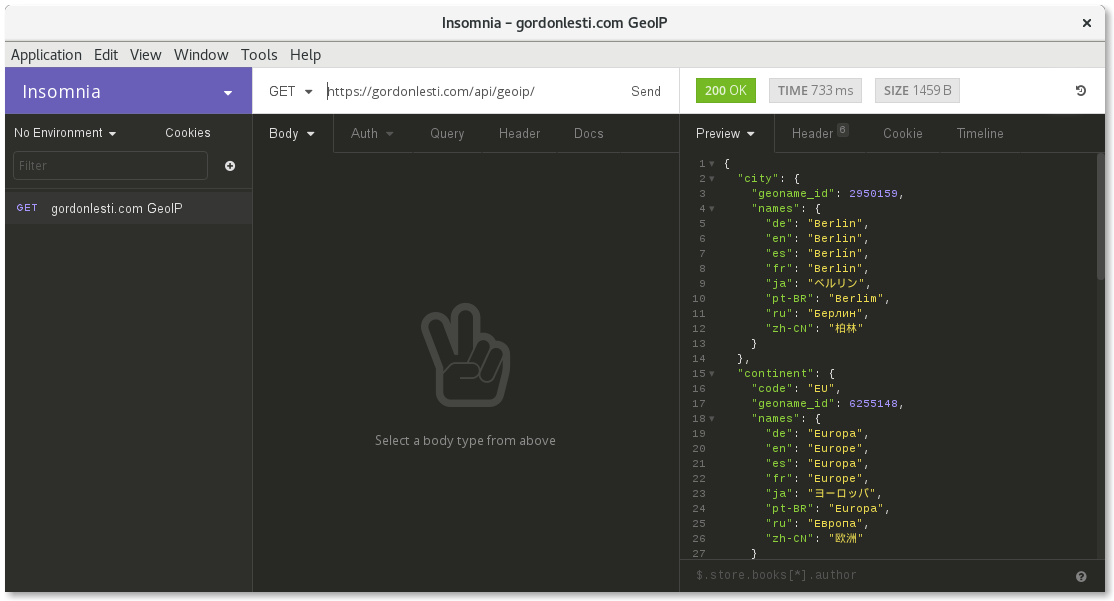

When prompted, drag Insomnia to your Applications folder.
#Insomnia api rest download#
Download and double-click the disk image. That's it! Now execute the call once, right-click the call in the sidebar to select " Generate Typescript Types", and then save the file as types.ts to a location on your computer.Īuto-generated TS types. Get Insomnia on macOS through a download, or by using Brew.
#Insomnia api rest install#
Install the insomnia-plugin-res2ts plugin by entering its name in Insomnia's plugin prefs and clicking "Install Plugin": Insomnia's Plugin preference view Some fields are redacted because they are for my eyes only!Ī quick internet roundtrip enlightened me with a cool trick, you can use an Insomnia plugin to generate TS types based on the response body. Large JSON body returned by the OneTrust API. I need those in my codebase but didn't want to manually type or copy over and adapt all the fields in the response. Insomnia is lightweight and focuses on what matters.Ĭurrently I'm working with a OneTrust API which has a huge JSON body that's being returned. Set it to a positive number of milliseconds to have the request automatically cancel after the specified time.

Set it to 0 to signify that a request should never time out. Set and change HTTP request timeout options in preferences. To import a new certificate, open the Document/Collection Settings dialog accessible from the top-left menu and click on the Client Certificates tab. Request Timeouts Insomnia Docs Request Timeouts An HTTP request timeout can be specified globally in preferences. The latter is super cluttered, doesn't look modern, is slow and has way too many buttons. I will put here the official documentation, in case the link disappears: Insomnia supports PFX (Mac), and PEM (Windows and Linux) certificates. I love Insomnia, mainly because I hate Postman. If you are reverse-engineering a public API or using APIs written by single open source contributors, then chances are pretty low that you are going to get an OpenAPI spec. Unfortunately there are a lot of cases were even that form of documentation is lacking. However we don't live in my ideal world and the second best option is that we use OpenAPI specs that are well documented and which we can maybe derive TS types from via a tool like openapi-typscript. In my ideal world we use GraphQL apis that auto document themselves based on their schema and generate Typescript types with graphql-codegen. 🌚 REST JSON to Typescript with Insomnia Date: February 01 2022


 0 kommentar(er)
0 kommentar(er)
